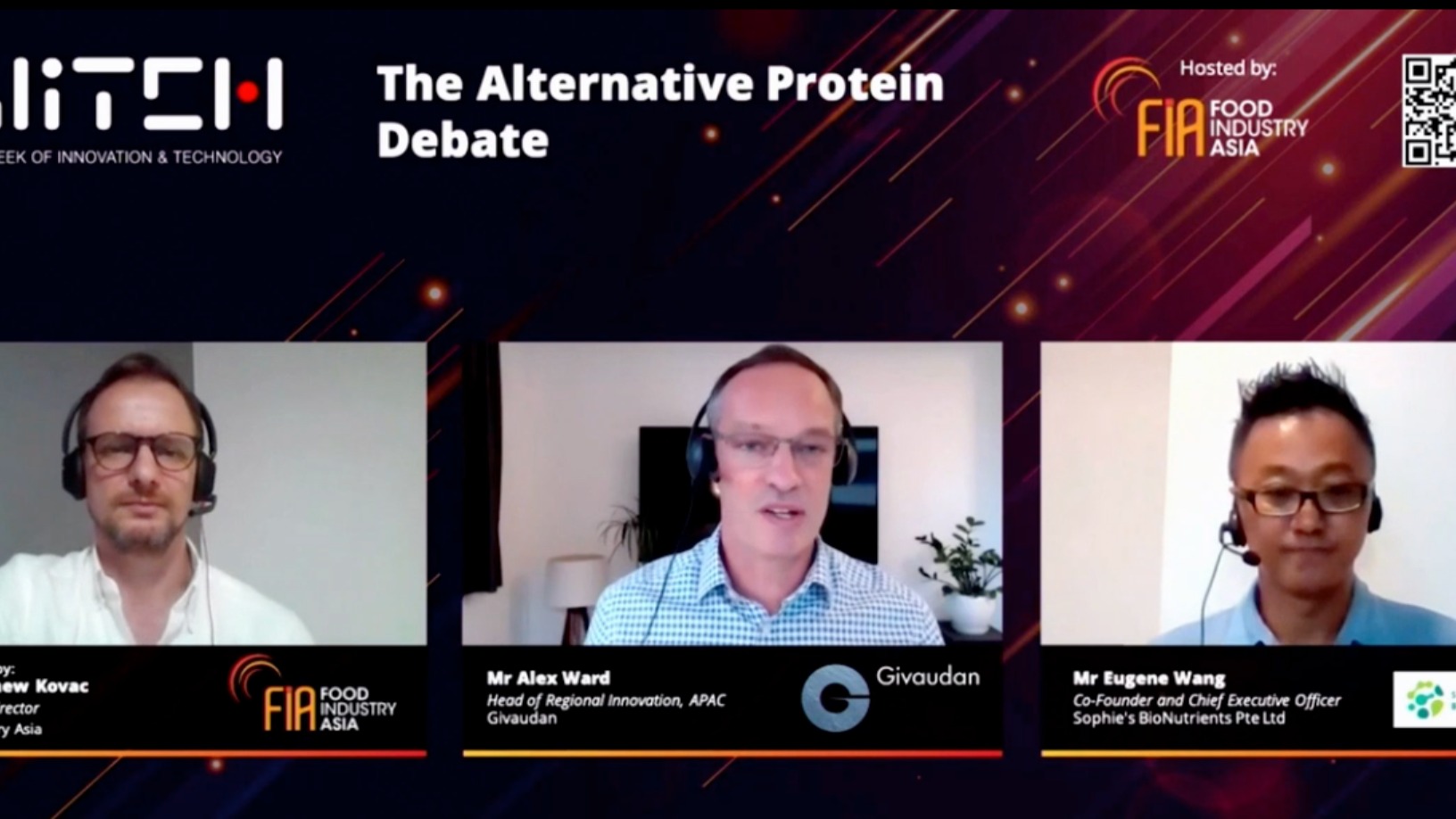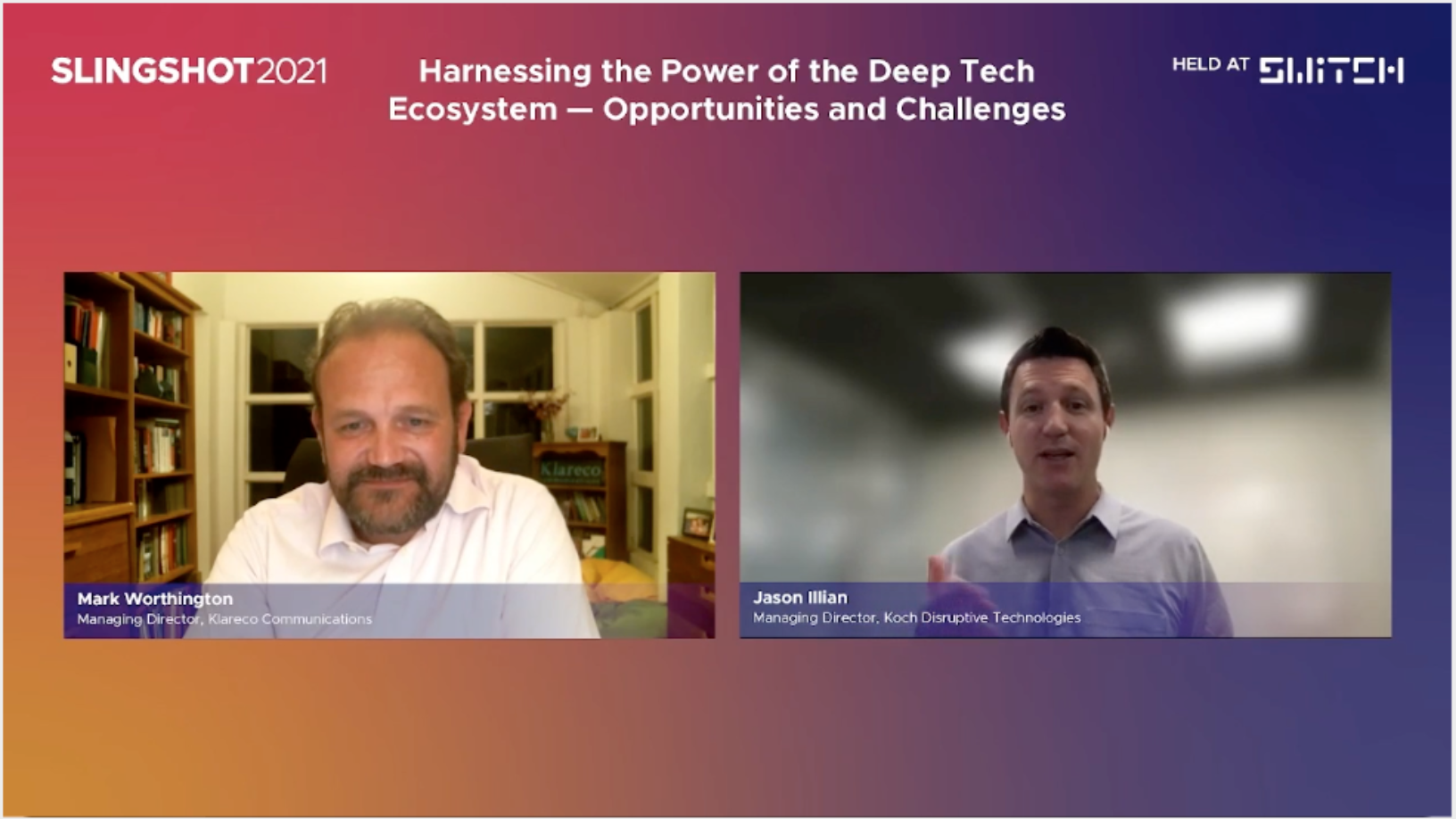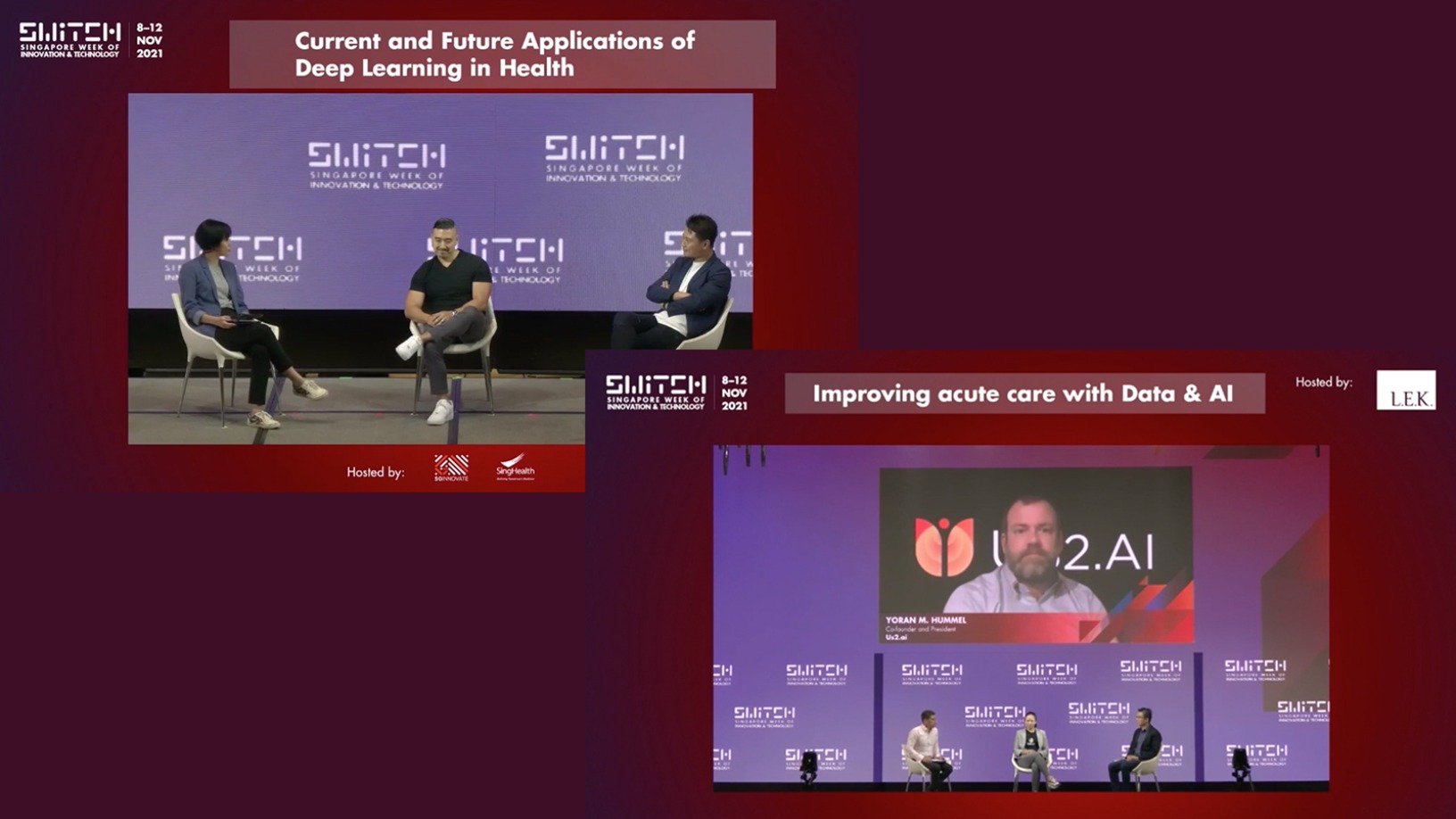According to the Good Food Institute, a record $3.1bn has been invested globally in alternative proteins since 2020. APAC is the fastest-growing region and investments continue to flow into the foodtech and alternative protein sectors, a trend that was accelerated by the Covid-19 pandemic. Singapore-based Shoik Meats raised a $12.6m Series A round in 2020. Starfield, the most-funded plant-based meat startup in China, which raised a $10m Series A in August 2020, has partnered with about 100 major brands in one and half years and its products are available at over 5,000 outlets across China.
On March 18, leading entrepreneurs and investors gathered at the New Food Invest virtual conference organized by ProVeg and Beyond Animal to focus exclusively on bringing international plant-based and cultivated food startups together with investors and venture capitalists. In a panel discussion titled “Challenges of growing an Alternative Protein Business in Asia," Shiok Meats CEO and co-founder Sandhya Sririam, Starfield CCO and co-founder Liu Shuman, Michael Fox, CEO and co-founder of the Australian plant-based meat startup Fable Foods, and Abhishek Sinha, CEO and co-founder of Indian plant-based meat startup GoodDot, joined moderator Stephanie Wu, CEO of CompassList to share their experiences in the last few years, the challenges they faced and the changes they have made.
Below is an extract from the panel discussion, edited for length and clarity.
Stephanie Wu: What do you think has changed in the past two years in terms of the public’s view and the investors’ interest about the prospect of plant-based and cell-based meat alternatives?
Liu Shuman: Two years ago, when we introduced our company Starfield to others, people were very confused, having no idea of plant- and cell-based meat. Currently, a lot of popular restaurant chains have already included plant-based meat on their menus. Now, when we introduce Starfield again to them, they say they have tried it once or twice. Quite a lot of investors have shown interest in our company, and other plant-based meat companies as well. This industry is growing very fast in China at the moment.
Sandhya Sririam: When we started Shiok Meats about two and a half years back in Singapore, we were the first ever cell-based meat company launched in the country and Southeast Asia. We were kind of starting a movement to get people to think about alternative proteins. Two months later, we saw the launch of Impossible Foods and OmniMeat, and then a cascade of things just started happening. If I had started Shiok Meats five years ago, I would have failed miserably. It's being at the right time at the right place. Asia is well primed for a lot of investments into the sector and consumers are excited. Recently we published a survey, saying that 78% of 850 Singapore residents are interested to buy and try cell-based seafood. This is a huge adoption number for us. The Singapore government has attracted alternative protein companies and other food companies to set up their headquarters here. All of these put together have driven a lot of investments through Australia and Asia for alternative proteins.
If I had started Shiok Meats five years ago, I would have failed miserably. It's being at the right time at the right place
Abhishek Sinha: When we launched, there was no such category in India. But the Beyond Meat IPO unveiled the possibility that big money could be made in the plant-based alternative industry. So, in the past two years we have seen a lot of companies coming into the space. Contrary to popular belief, around 72% of India’s population are meat eaters. That's a big number. From our own data point, we are witnessing the meat eaters and flexitarians being the earliest adopters. This presents a massive business opportunity, and I think it's on the verge of an explosion here.
Michael Fox: The global meat industry is worth $2tn which makes up 2.5% of the global GDP. It's a massive industry and I think over the next 20 to 50 years, the bulk of that industry is going to shift to plant-based and cell-based options rather than meat from animals. Investors can see that massive shift, or massive disruption, coming, and they want to be a part of it. Asia has more than half the world's population, so there are big opportunities or [potential for] disruption here.
Assuming there isn’t much desire from vegetarians to eat meat, can I say that the primary target audience is actually the meat eaters, rather than vegetarians?
Sririam: Definitely for us. With cell-cultured meat, the final product is real meat. Honestly, we can label it as vegan or vegetarian, but we don't want to. It’s another option which is more sustainable and better for animals and the environment. But at the same time, we are very supportive of plant-based meat as well. In fact, most of our products that we work on in terms of prototyping and testing is a blend with plant-based meat products. We do that quite often, and we're pretty excited about a whole blend industry per se, the plant and cultured meat.
Sinha: India presents an interesting case study in this regard. The earliest adopters or the low hanging fruits are meat eaters. It's difficult for a vegetarian to try plant-based meat. But once they do, they get kind of addicted because the protein coming from [plant-based] meat is quite different from vegetarian food products. We get a lot of repeat and very dedicated vegetarian consumers once they try it out. Some amount of lentils consumption is being replaced by plant-based meat. India is the largest consumer and producer of lentils in the world. We didn’t anticipate even the lentil industry might get disrupted with more adoption of plant-based meat among the vegetarian population.
Fox: We're going after meat eaters, who actively want to reduce their meat consumption for health reasons.
Liu: It's the same for Starfield. Our target is definitely meat eaters. In China, there are no formal statistics but it’s estimated that the vegetarian population is less than 1%. If we are targeting vegetarians, we don't have much business to do.
In terms of customer education for meat eaters, how are the responses so far? How difficult has it been for you to appeal to a broader audience base?
Fox: If you look at any kind of food products, the primary drivers for consumer purchase are taste, price and convenience. We, as alternative protein producers, have got to develop products that meet those needs. We've got to beat animal meat on all of those features, producing products that taste better than animal meat, cheaper than animal meat and are available in more places than animal meat. We also have obviously the benefits of health, sustainability, and the products being more ethical. So, if we can beat animal meat on those three factors, there's really no reason for anyone to eat meat from animals anymore.
Sinha: Basically, people are getting a product that is tasty and affordable. I think that's what we are trying to target. We have launched a sister company to offer vegan fast food and is getting very good response from paying consumers. Based on the live data from paying consumers, we are modifying our offerings to provide what they need. Price is going to be the primary driving force and the ingredients of plant-based meat are healthier than meat. So we are targeting the taste and price, and we are getting good results.
Liu: We are trying all kinds of strategies to communicate with our consumers and reached the conclusion that it’s too early to talk about animal welfare or environmental protection in China at the moment. So we will emphasize the health benefits. For example, our products are much lower in calories, 50% less than ground beef. Another factor is food safety. Because of Covid-19 and other animal-related diseases that are actually getting more frequent, we will say plant-based meat is a safer and better choice.
Both Michael and Abhishek have mentioned in previous interviews that some of the products have achieved price parity with real meat and its counterparts. Could you share your experience and how challenging it has been for you?
Fox: We started out replicating probably a slightly different type of meat from what most other meat alternative companies replicate. We went after slow-cooked meats like pulled pork, braised beef and beef brisket, as opposed to doing minced beef or chicken. And we did that for two reasons. One, we wanted a little bit more clear space in the market, so we wanted to replicate a different type of meat so that those who might have already had a Beyond burger on the menu, could add a beef brisket burger onto their menu using our products. The second reason is [slow-cooked] meat is more expensive than ground beef. Cooked beef brisket or braised beef tend to sell at almost double the price of ground beef, whether in retail or food service. That allowed us, whether going into a restaurant or a retailer, to match the price of braised beef or beef brisket and still make a reasonably good margin ourselves. As we scale up, we're able to bring our costs – manufacturing and ingredients sourcing costs – down and then we'll move to more mainstream meats like ground beef burgers.
Sinha: Our target was to develop a tasty alternative to meat. Once we did that, we went about reducing the costs. We customized our equipment to make it produce less wastage. We were bootstrapped, so we didn't have major overheads or marketing and branding which would eventually get loaded onto the products. We kept our organization very lean. From a cost perspective, we have a range of products from premium options to the more affordable ones. That’s how we have strived to continually bring the cost down.
Sandhya, what’s the most costly part in the process of creating cell-based meat? What has been the main obstacle that prevented the industry from achieving mass production in order to reduce the cost of lab-grown meat or seafood to achieve price parity? How much longer is the wait for cell-based shrimp and lobsters to be served at restaurants?
Sririam: The first thing we have to understand is that the cultured meat industry is sitting between the pharmaceutical industry and food industry. The technology has been established and used for years in the pharmaceutical and biotech industries, mainly for healthcare and biomedical sciences, but is still very niche. The amount of stem cells we grow is very little and the scale is small and all of the ingredients that we use to grow those stem cells are pharmaceutical grade. But when we use such a technology and make food out of it, the food needs to be delicious and safe. It has to be edible and inexpensive. So it is not a question of whether we can bring down the price or when we’re able to bring down the price. It's a question of the scale, like when are we going to reach the scale that the whole world can eat cell-based meats at the same time. It's a matter of time rather than whether you can ever do it.
One kg of Shiok shrimps used to cost $10,000 but we have already brought it down to $3,500 in less than two years. The price will be $50 by the end of this year. Shrimp costs anywhere between $30 and $220 per kg depending on the type and the market that you're in. So $50 is actually less than average pricing and it's definitely affordable, at least for affluent populations in Singapore and Hong Kong. But we have seen price parity happen with other brands. Eat Just is selling their chicken nuggets in Singapore at S$23, which is less than $20. You can see that prices of these products are coming down. I would say, in the next 2–3 years, price parity will occur, and then we're going to have more products in the market. We will be launching our products at the end of 2022 and the beginning of 2023, and our price target is $50 for a kg of shrimps.
I would say, in the next 2–3 years, price parity will occur, and then we're going to have more products in the market
The most expensive component of the entire process is the nutrient media or nutrient mix that we feed the cells, which we call media. In order to tackle this problem, we are swapping out the chemical ingredients for edible plant extracts. That's how we bring down the cost and also the whole industry is working together right now. There's so much boom in the cellular agriculture that we're seeing ingredient suppliers, even pharmaceutical companies, collaborating with us to bring down the cost.
Can we assume that Asia-based food tech companies have a unique advantage in the home markets and a great amount of room to play with plant-based meat?
Liu: China is known for various culinary traditions in different parts of the country. So our strategy is to develop products that have a relatively neutral taste. Let’s take Beyond Meat patty for example. It has a signature barbecue flavor, but it only suits burgers. But in China, beef is cooked in totally different ways. So, our products are really neutral in flavor so that they can go well with different kinds of cuisines and sauces and different kinds of cooking methods. Chefs and our food service partners will have more space to create their own products using our ingredients.
Fox: Obviously, different markets have different taste requirements for the way that they traditionally cook. Our approach is to supply base ingredients that chefs or our partners can use in all sorts of different ways. When supplying to restaurants, we have a chef between our product and the end consumer of that product and will enable the chef to take our base product and tailor it for different cuisines. And then our approach with retail is to find value-added partners in different markets who can do the same.
Sinha: The focus of GoodDot is similar. From the very beginning, our development has been divided into two categories: one is for R&D and the other for culinary, and the culinary part is the easy part.
How challenging or successful has it been so far for your company to secure stable and quality ingredients supply?
Liu: I think it's not yet a problem for us because we are still so small. But there's one problem that started from last year: the price of the soybean protein has been increasing. So we are facing the cost pressure, but we are working with major suppliers, seeking deep collaborations to control the cost of ingredients.
Fox: We focus on using ingredients that are readily available and that we can scale with. With our first product, our base ingredient is the most commonly grown mushroom in the world and definitely the most commonly grown mushroom in Asia. An average person in Asia eats 14.5 kg of mushrooms a year, and there are about 4bn people in Asia. There's a huge quantity of shiitake mushrooms available in the market. Last year, we sold 1m servings of our products. We are excited to achieve that, but it's a drop in the ocean. Our supply partners have been great to work with. It's great for them to have another place to sell their ingredients.
Sinha: That’s definitely not a problem in our case. We use soy protein, wheat protein and pea protein, which are readily available. We have very encouraging relationships with some leading global ingredient suppliers who are also helping us by using some innovative ingredients, what they see as the future for product development. They see a multi-billion dollar opportunity everywhere, so they are willing to work with B2C-facing companies to develop products that they can funnel in their pipeline. That's also something very interesting, which was not happening a couple of years back.
One question for Shiok Meats. Singapore has approved Eat Just’s cell-based meat. Do you foresee a domino effect for other countries to follow the lead?
Sririam: I hope they do. I'm glad that Singapore is the first country to come up with a regulatory framework and approve cell-based meat. They're setting an example for other countries. We're already hearing that a couple of other Asian countries are looking into this. We're pretty excited that Asia has moved very fast in the sector. As one of the other panelists mentioned, we have more than 4bn people in Asia. This is where most of the population lives and it's high time we start approving more novel foods and alternative proteins and get our consumers as excited as we are.
A question for Starfield. You have built partnerships with over 100 brands in China. How difficult or challenging has it been to build a distribution and partnership network?
Liu: We have been very lucky to partner with many brands and they have given us a lot of support. I think the reason why they want to collaborate with us is that they are aware of the global trend of plant-based foods. For example, the bubble tea chain Hey Tea is very advanced in this regard and wants to build a new brand image of sustainability. For others, like Thailand’s CP group, they may not have a department or a project to research into plant-based food, so they want to collaborate with us to test the market.
CompassList is an official media partner of New Food Invest 2021.











